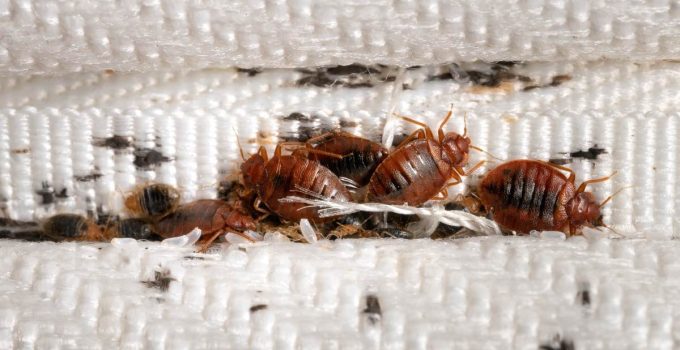In recent years, the resurgence of bed bugs has become a growing concern for homeowners and travelers alike. These tiny, blood-sucking pests can quickly turn your peaceful slumber into a nightmare. In this comprehensive guide, we will explore everything you need to know about Bed bugs bite infestations, from identifying their presence to taking effective action to eliminate them.
- Introduction
Bed bugs are small, reddish-brown insects that feed on the blood of humans and animals while they sleep. They are notoriously resilient and can hide in the tiniest cracks and crevices, making them challenging to eliminate once they infest your home.
- What Are Bed Bugs?
Bed bugs belong to the Cimicidae family and are commonly found in warm climates. They are flat, oval-shaped insects that measure about 5-7 millimeters in length. While they do not transmit diseases, their bites can lead to itching, discomfort, and skin irritation.
- Signs of Bed Bug Infestation
Identifying a bed bug infestation early is crucial for effective eradication. Look out for these telltale signs:
- Tiny, Rust-Colored Stains: These are often the result of crushed bed bugs.
- Eggshells and Tiny White Eggs: Bed bug eggs are approximately 1mm in size.
- Musty Odor: Bed bugs release a distinctive, sweet, musty smell.
- Visible Bed Bugs: Adult bed bugs are visible to the naked eye, especially in the dark.
- Where Do Bed Bugs Hide?
Bed bugs are skilled at hiding in various places, including:
- Mattresses and Box Springs
- Cracks and Crevices in Furniture
- Behind Wallpaper
- Electrical Outlets
- Luggage and Clothing
- Health Risks Associated with Bed Bugs
While bed bugs do not transmit diseases, their bites can lead to:
- Itchy, Red Bumps
- Skin Infections (from scratching)
- Allergic Reactions (in rare cases)
- Preventing Bed Bug Infestations
To prevent bed bug infestations, follow these tips:
- Regularly inspect your bedding and furniture
- Use mattress encasements
- Be cautious while traveling
- Avoid secondhand furniture
- Keep your home clean and clutter-free
- Identifying Bed Bug Bites
Bed bugs bite are often mistaken for other insect bites. They typically appear as small, itchy red welts in a cluster or line on your skin.
- DIY Bed Bug Detection
You can perform a DIY bed bug inspection by carefully examining your bedding, mattress seams, and other potential hiding spots. Use a flashlight to look for signs of bed bugs.
- Professional Bed Bug Inspection
For a more thorough inspection, consider hiring a professional pest control expert who can use specialized tools and techniques to identify and locate bed bugs in your home.
- Treating Bed Bug Infestations
When it comes to eliminating bed bugs, there are two main approaches: natural remedies and chemical treatments. We’ll explore both options in detail.
- Natural Remedies for Bed Bugs
Natural remedies such as diatomaceous earth, essential oils, and heat treatment can help in controlling bed bug populations without the use of chemicals.
- Chemical Treatments
Chemical treatments should be administered by professionals. They are effective in eradicating bed bugs but may require multiple applications.
- Preparing for Bed Bug Treatment
Proper preparation is essential for successful bed bug treatment. This includes decluttering your home, washing and drying infested bedding, and vacuuming thoroughly.
- Maintaining a Bed Bug-Free Home
Once your home is bed bug-free, take measures to prevent future infestations by following a strict cleaning and inspection routine.
- Conclusion
In conclusion, bed bug infestations can be a nightmare, but with early detection and the right treatment, you can regain control of your home. Remember that prevention is key, and maintaining a clean and clutter-free environment goes a long way in keeping these pests at bay.



